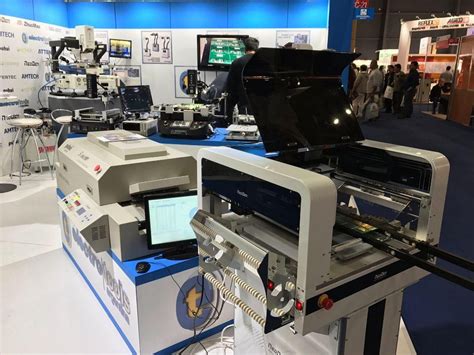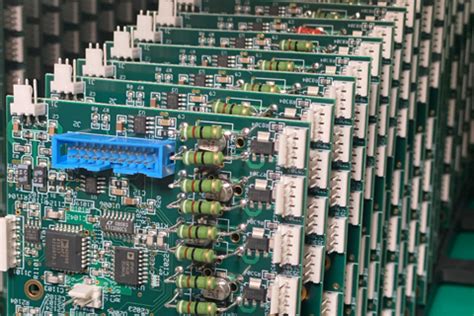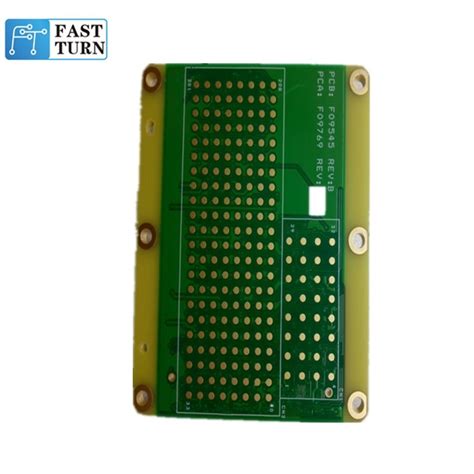Elevating Electronics Manufacturing with Turnkey PCB Assembly

Key Takeaways
Modern PCB assembly processes have become the backbone of efficient electronics manufacturing, offering end-to-end solutions that integrate design validation, component sourcing, and rigorous testing. By adopting turnkey PCBA services, manufacturers eliminate logistical bottlenecks while ensuring precision at every production stage. The PCB assembly workflow inherently reduces human error through automated placement systems and AI-driven quality checks, translating to higher yield rates and faster time-to-market.
Central to this approach is the strategic consolidation of supply chains, where PCBA providers manage everything from prototyping to final inspection. This holistic model not only optimizes material costs but also enhances scalability—critical for industries demanding rapid innovation cycles. Importantly, turnkey assembly incorporates real-time traceability, allowing engineers to monitor production metrics and address potential defects before they escalate. These advancements underscore why contemporary electronics development increasingly relies on unified PCB assembly ecosystems to balance speed, cost, and reliability.
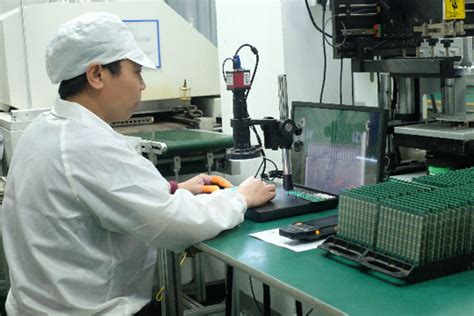
Streamlining Production with Turnkey PCB Assembly
Modern PCB assembly processes thrive on integration, and turnkey PCBA services exemplify this by unifying design, procurement, and manufacturing into a seamless workflow. By consolidating these stages under a single provider, businesses eliminate fragmented communication and reduce delays caused by multi-vendor coordination. For instance, design validation and component sourcing are synchronized early in the process, minimizing redesign risks and ensuring BOM (Bill of Materials) accuracy.
Tip: When selecting a turnkey PCB assembly partner, prioritize providers with transparent supply chain networks to avoid component shortages or counterfeit parts.
Advanced automation in PCBA further enhances efficiency. Automated pick-and-place systems, combined with AI-driven inspection tools, accelerate production while maintaining precision. This integration reduces human error rates by up to 70%, according to industry studies, ensuring first-pass yield improvements. Additionally, real-time project tracking allows manufacturers to monitor progress and adjust timelines dynamically, aligning with just-in-time delivery models.
The financial benefits are equally compelling. By outsourcing logistics and inventory management, companies lower overhead costs tied to warehousing and procurement staffing. Moreover, economies of scale in turnkey PCB assembly enable bulk purchasing of components, slashing per-unit expenses. This holistic approach not only streamlines production but also frees internal teams to focus on innovation and market expansion.

Cost-Effective PCB Manufacturing Solutions Unveiled
Modern PCB assembly processes have redefined cost efficiency in electronics manufacturing by integrating design, procurement, and production into a unified workflow. By leveraging turnkey PCBA services, companies eliminate fragmented supply chains, reducing overhead costs associated with managing multiple vendors. Strategic partnerships with certified component suppliers ensure access to competitively priced materials, while bulk purchasing further drives down expenses. Advanced automated assembly systems minimize labor costs and human error, translating to faster turnaround times without compromising quality.
A key advantage lies in the scalability of turnkey solutions, which adapt seamlessly to both low-volume prototyping and high-volume production. Real-time cost analytics tools enable manufacturers to identify savings opportunities, such as optimizing board layouts for material efficiency or selecting alternative components with equivalent performance. Additionally, consolidated logistics—from component sourcing to final testing—reduce shipping delays and administrative burdens.
By embedding quality assurance checks at every stage, businesses avoid costly rework and recalls, ensuring compliance with industry standards. This holistic approach not only lowers upfront investments but also enhances long-term profitability, making PCB assembly a strategic asset for budget-conscious innovators.
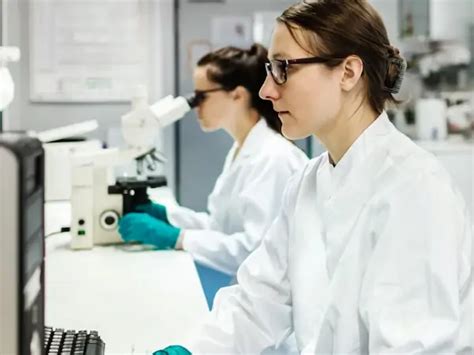
Error-Free Electronics via Integrated PCB Assembly
Integrated PCB assembly processes are redefining quality standards in electronics manufacturing by eliminating error-prone manual interventions. Unlike traditional fragmented approaches, turnkey PCBA solutions synchronize design validation, component placement, and automated optical inspection (AOI) into a unified workflow. This cohesion minimizes human error, with advanced algorithms flagging mismatches between design files and physical layouts during real-time diagnostics.
A critical advantage lies in the seamless handoff between stages. For instance, PCB assembly providers using smart manufacturing protocols can detect soldering defects or misplaced components at rates exceeding 99.98% accuracy. The table below illustrates key phases in error mitigation:
| Phase | Error-Reduction Mechanism | Impact |
|---|---|---|
| Design Validation | DFM/DFA analysis | Prevents layout conflicts |
| Component Sourcing | AI-driven BOM cross-checks | Ensures part compatibility |
| Automated Assembly | High-precision pick-and-place systems | Reduces placement deviations |
| Testing | In-circuit & functional testing | Identifies latent defects |
By embedding quality checks at every stage, integrated PCBA workflows achieve near-zero defect rates while accelerating production cycles. This systematic approach not only safeguards against costly rework but also aligns with industry benchmarks like IPC-A-610 Class 3 standards. As a result, manufacturers gain confidence in delivering error-free electronics without compromising scalability or time-to-market objectives.
From Design to Testing: Full PCB Assembly Flow
The journey of PCB assembly begins with meticulous design optimization, where engineers translate schematics into manufacturable layouts using design-for-manufacturability (DFM) principles. This phase ensures compatibility with automated production systems, minimizing errors before components reach the assembly line. Following design finalization, PCBA providers initiate component sourcing, leveraging global supply networks to procure certified parts while avoiding counterfeit risks.
Once materials are secured, the surface-mount technology (SMT) phase begins, where precision machinery places micro-components onto boards with micron-level accuracy. Concurrently, through-hole components are inserted for applications requiring mechanical stability. Post-soldering, boards undergo automated optical inspection (AOI) to detect soldering defects or misalignments, ensuring adherence to IPC-A-610 standards.
The final stage involves functional testing, where assembled boards are subjected to real-world operating conditions. Advanced PCB assembly services employ boundary-scan and in-circuit testing (ICT) to validate electrical performance, isolating faults at the subsystem level. This end-to-end integration of design, procurement, and validation not only accelerates time-to-market but also reduces rework costs by 40–60% compared to fragmented workflows. By unifying these stages under a single PCBA provider, manufacturers eliminate logistical bottlenecks while maintaining traceability across the entire production lifecycle.
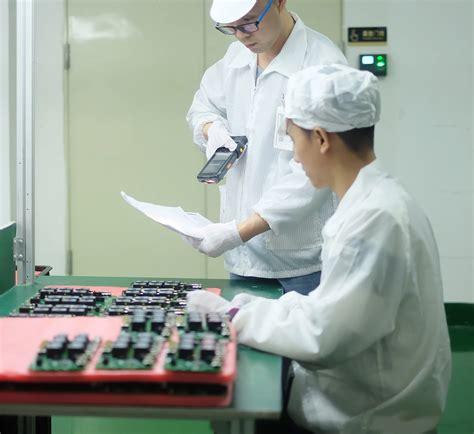
Accelerating Innovation with Turnkey Assembly Services
The adoption of turnkey PCB assembly streamlines product development cycles by integrating design, component sourcing, and testing into a unified workflow. This holistic approach eliminates fragmented processes, enabling engineers to focus on innovation rather than logistical hurdles. By outsourcing PCBA tasks to specialized providers, companies gain access to advanced manufacturing technologies—from automated pick-and-place systems to AI-driven quality checks—that accelerate prototyping and reduce time-to-market by up to 40%.
A key advantage lies in the seamless collaboration between design teams and PCB assembly experts. Early involvement of manufacturing partners ensures design-for-manufacturability (DFM) principles are embedded from the outset, minimizing costly revisions. For instance, real-time feedback on material availability or thermal management optimizations prevents delays during component sourcing, while automated testing protocols guarantee error-free outputs.
Moreover, turnkey services foster scalability by offering flexible production volumes. Whether transitioning from low-volume prototypes to mass production or adapting to sudden demand shifts, integrated PCBA solutions maintain consistency across batches. This agility is critical in industries like IoT and automotive electronics, where rapid iteration cycles define competitive advantage. By consolidating expertise under one roof, businesses not only mitigate risks but also unlock resources to pioneer next-generation technologies.
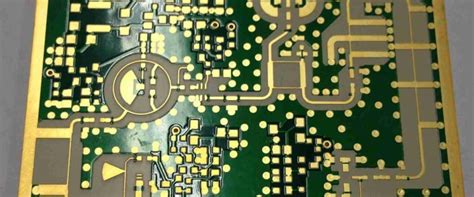
Component Sourcing Simplified in PCB Manufacturing
Effective PCB assembly relies on seamless component procurement—a historically complex stage now streamlined through turnkey PCBA solutions. Traditional sourcing often involves fragmented communication with multiple suppliers, fluctuating pricing, and logistical delays. Modern turnkey services eliminate these hurdles by integrating vendor management, inventory optimization, and global supply chain access into a unified workflow.
By leveraging established partnerships with certified distributors, PCB assembly providers secure high-quality components at competitive rates while mitigating risks like counterfeit parts or obsolescence. Advanced procurement teams utilize real-time market intelligence to anticipate shortages and adjust sourcing strategies dynamically. This proactive approach ensures compliance with design specifications and minimizes lead times.
For manufacturers, this translates to just-in-time inventory models that reduce warehousing costs and accelerate time-to-market. Automated tracking systems further enhance transparency, allowing clients to monitor component status throughout the PCBA process. The result? A simplified, error-resistant supply chain that aligns with broader goals of turnkey PCB assembly: efficiency, scalability, and precision.
Quality Assurance in Modern PCB Assembly Processes
Modern PCB assembly relies on advanced quality assurance (QA) protocols to ensure zero-defect outcomes across complex electronics manufacturing. By integrating automated optical inspection (AOI), X-ray testing, and functional validation, PCBA providers systematically identify issues like soldering defects, component misalignment, or electrical inconsistencies before final product delivery. These multi-layered checks align with ISO 9001 and IPC-A-610 standards, guaranteeing that every board meets both design specifications and industry reliability benchmarks.
A critical aspect of QA lies in traceability systems, which track components from sourcing through assembly. This not only minimizes risks of counterfeit parts but also streamlines root-cause analysis for post-production adjustments. Real-time data analytics further enhance process control, enabling rapid calibration of machinery to maintain precision during high-volume runs.
By embedding QA into every phase of turnkey PCB assembly, manufacturers reduce rework costs while accelerating time-to-market—key advantages in industries demanding mission-critical performance, such as aerospace or medical devices. This rigorous approach ensures that PCBA solutions consistently deliver the durability and functionality required for next-generation electronics.
Smart Manufacturing: Turnkey PCB Assembly Benefits
As electronics manufacturing evolves toward smart manufacturing, turnkey PCB assembly services are emerging as a cornerstone of efficiency and precision. By integrating advanced automation with end-to-end project management, PCBA providers streamline workflows from prototyping to mass production. Automated pick-and-place systems, AI-driven quality inspections, and IoT-enabled process monitoring minimize human intervention, reducing error rates by up to 70% compared to traditional methods.
A key advantage lies in the seamless synchronization of PCB assembly stages. Real-time data analytics optimize material usage and production timelines, while predictive maintenance algorithms prevent downtime. For instance, component sourcing becomes more agile through centralized vendor networks, ensuring traceability and reducing lead times. This holistic approach not only accelerates time-to-market but also enhances scalability—critical for industries like automotive or medical devices where compliance and reliability are non-negotiable.
Moreover, turnkey solutions embed quality assurance at every phase. Automated optical inspection (AOI) and X-ray testing validate solder joints and component alignment, aligning with ISO-certified standards. By merging smart manufacturing technologies with PCBA expertise, businesses achieve tighter cost control, fewer rework cycles, and the flexibility to adapt to rapid design iterations—ultimately driving innovation in an increasingly competitive landscape.
Conclusion
In the evolving landscape of electronics manufacturing, turnkey PCB assembly (PCBA) stands as a cornerstone for achieving operational excellence. By integrating design, component sourcing, assembly, and testing into a unified workflow, this approach eliminates fragmented processes that often lead to delays or errors. The inherent efficiency of turnkey PCBA not only accelerates time-to-market but also reduces overhead costs, enabling businesses to allocate resources toward innovation rather than logistical hurdles.
As the industry shifts toward smart manufacturing, the demand for seamless coordination between prototyping and mass production grows. Turnkey PCB assembly services address this need by offering scalable solutions backed by rigorous quality assurance protocols. Whether for startups or established enterprises, the ability to rely on a single partner for end-to-end production ensures consistency and precision—critical factors in maintaining competitiveness.
Ultimately, adopting turnkey PCBA is not merely a tactical choice but a strategic advantage. It bridges the gap between conceptual design and functional electronics, empowering manufacturers to meet modern demands for agility, reliability, and cost-effectiveness without compromising on performance.
FAQs
What distinguishes turnkey PCB assembly from traditional manufacturing methods?
Turnkey PCB assembly (PCBA) consolidates design, component sourcing, prototyping, and testing under a single provider, eliminating fragmented workflows. Traditional approaches often require coordinating multiple vendors, increasing error risks and delays.
How does PCBA reduce costs for complex electronics projects?
By integrating supply chain management and bulk purchasing, turnkey services minimize material waste and overhead. Automated quality assurance processes further reduce expenses linked to rework or defects.
Can turnkey PCB assembly accommodate custom design requirements?
Yes, customization is central to PCBA workflows. Providers optimize layouts for signal integrity and thermal performance while ensuring compliance with industry standards like IPC-A-610.
What safeguards ensure reliability in PCB assembly?
Advanced automated optical inspection (AOI) and X-ray testing validate solder joints and component alignment. Rigorous functional testing simulates real-world operating conditions before final delivery.
How does component sourcing impact project timelines?
Turnkey partners leverage global supplier networks to mitigate shortages. Real-time inventory tracking prevents delays, with some offering alternate part recommendations during supply chain disruptions.
Are PCBA services suitable for low-volume prototyping?
Absolutely. Many providers specialize in rapid prototyping, enabling iterative testing without minimum order quantities. This accelerates time-to-market for innovative designs.
Ready to Streamline Your Electronics Production?
Explore tailored turnkey PCB assembly solutions designed for precision and scalability. Click here to discover how we optimize your manufacturing workflow.

